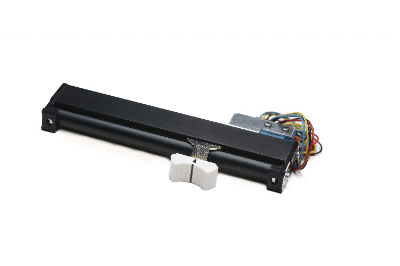What Is a Slide Potentiometer?
 A slide potentiometer is a type of variable resistor with a knob that slides horizontally to move the contactor.
A slide potentiometer is a type of variable resistor with a knob that slides horizontally to move the contactor.
It is one of the variable resistors whose resistance value is changed by physically moving the contactor. Variable resistors also include rotary types called rotary volumes and potentiometers. The main difference is that the slide potentiometer moves horizontally in one direction, whereas these move the contactor in the rotational direction.
Slide potentiometers can also be structurally designed to handle more power than rotary ones.
Uses of Slide Potentiometers
Typical applications for slide potentiometers include audio mixers and graphic equalizers in PA (public address) equipment, and dimmers to control room lighting. Whether a slide potentiometer or a rotary type, the function as a variable resistor is the same, but the appearance and the user’s sense of operation are very different.
Therefore, they are selected according to the usage and outfit (design) envisioned when developing devices and products. In particular, by adding a memory next to the slide pick, the amount of setting can be visually grasped, so it is often utilized for applications such as adjusting volume or light intensity.
Principle of Slide Potentiometers
When the position of the slide potentiometer pick is moved, the resistance value between the terminal connected to one end of the resistive element and the terminal connected to the conductor connected by the contactor changes according to the distance from the end of the resistive element to the contactor. This allows the resistance value to be changed according to the position of the plucking.
Structure of Slide Potentiometers
A slide potentiometer has a resistive element of a certain length, covered by a body case, with terminals at both ends of the resistive element for connection. There is a slit in the body case where a plucking tool can slide, and a plucking tool with a contactor attached is placed there.
In parallel with the resistive element, there is a conductor in the case, and the contactor is in contact with both the resistive element and the conductor. The conductor is also equipped with terminals, and together with the terminals on both ends of the resistor, it has a structure with three terminals.
Other Information on Slide Potentiometers
1. Characteristics of Slide Potentiometer
A slide potentiometer changes its resistance according to the position of the pick, and the degree of change in resistance relative to that distance can be expressed as one of the three curves shown in ABC. When a voltage is applied to both ends of the resistive element and the position of the contactor is varied, a voltage appears between the terminal on one side of the resistive element and the terminal connected to the conductor connected by the contactor.
- In the Case of Curve A
The above voltage varies logarithmically with the distance of the pick. - In the Case of Curve B
The above voltage varies proportionally to the distance of the pick. - In the Case of Curve C
The above voltage varies inversely logarithmically with the distance of the pick.
Therefore, it is important to decide in advance at the design stage which characteristic to use.
2. Resistance of Slide Potentiometer
Among slide potentiometers, those used for small signals often have carbon or metal film resistive elements and are not suitable for high power applications. Rotating resistors, in particular, are structurally disadvantageous for using large resistive elements because the length of the resistive element is limited by its diameter.
Slide potentiometers, however, are less restricted in terms of resistive element length. Some product groups use enameled resistors for resistive elements or wire-wound resistors with resistive wires wound on rods, and these are available in power ratings from tens to hundreds of watts.